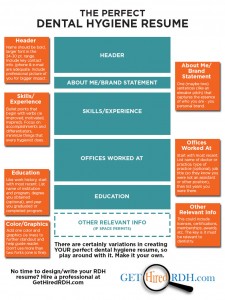Nobody is perfect, but given the tight job market, your resume should be close to it.
To begin, let’s talk about your first decision when creating a resume – the format (how it’s organized).
There are two basic types of resumes and a third that is really just a hybrid of the first two. They are called Chronological and Functional.
Even between the two styles, there isn’t a lot of difference. The key distinction is in how you list your work experience. In a chronological resume you detail specific things you have accomplished or are skilled at beneath your listing of each employer worked for (usually 3-5 bullets). In a functional resume you simply lump all those bullets together into their own section.
I generally recommend the functional style for the clients I work with. I just believe it puts a more distinct and higher emphasis on differentiators – things that make you unique – near the top of the resume. I don’t have a study to prove it, but I am betting 99 percent of employers start at the top of your resume and work their way down.
The Header
The most important information is your name and contact information, right at the top, called a Header. Make your name bigger so it really stands out (24-30 pt font). Add some color and graphics (possibly your picture) to really make it pop.
About Me
Next, I advise clients to create a section header called “About Me” or something similar. Traditionally, this has been labeled “Objective” – but that’s antiquated. Everyone knows your objective – it’s to get a job. About Me, has you telling them in one (maybe two) sentences what the employer will get when they hire you – your personal brand (another differentiation). Some might also call it your “elevator pitch.”
Experience
The next section is your Experience section – some will label it Skills or even Competencies. This is where you detail out and back up what you said in your About Me section. The tendency is to use this section to tell them you know how to do scaling and root planing or take x-rays. But this is a mistake, you really need to focus as much of this section on results you have achieved, things you have accomplished.
You can also use it to list specialized training not every hygienist has that is useful to a potential employer. For example, if you have been trained to use lasers, then include that (not every hygienist has). If you have training and experience working with people with special needs, include it. Could be lots of other things, too.
But the thing dentists really want to see is that you made a difference somehow – that you weren’t a hygienist that simply showed up every day. As your career moves along I would suggest keeping a running record of your successes, accomplishments, and positive feedback because it makes awesome resume material. It also helps you in interviews, because employers will ask you for specific examples related to your experience.
Work History
The next section, (Work History) is where you list your employers. Start with the current. List the practice or doctor name, type of practice (pediatric, general, etc.), city they are located in, and your job title (so they know it wasn’t a dental assisting or other job), then finish with the years you worked there (2000 to Present or 2008 to 2011). Then repeat for every job you list.
You can list dental assisting jobs. In fact, I believe any dental industry job can be helpful to list, unless you have worked as a hygienist for say 20-30 years.
Education
The next section is your education. Similar to your work history, you should list your education history in reverse chronological order. List the institution name, program name (Dental Hygiene Program) and then the year you graduated. I believe it’s optional whether to include the actual name of the degree, but if you have a Bachelors or Masters I would for sure mention it.
If you are right out of school you could list a couple bullets, if you choose. This might include if you were chapter president of your student hygiene association or if you graduated with honors, or if you received any awards.
If you got your hygiene education then, years later, went back and received significant other training (I’m mostly thinking of anesthesia), then you should add that too.
Service or Related Participation/Recognition
If there’s still room you can create a final section called Service or Related Participation and Recognition. Here you would list things like volunteer service or work you have done as a member of your local or national association. Or maybe, you’ve published industry articles or been honored with some recognition.
What NOT to Include
Unless you are really desperate to fill up space, don’t bother with the following:
- References available upon request
- License and certification information
- Hobbies or information about your family situation or where you grew up










